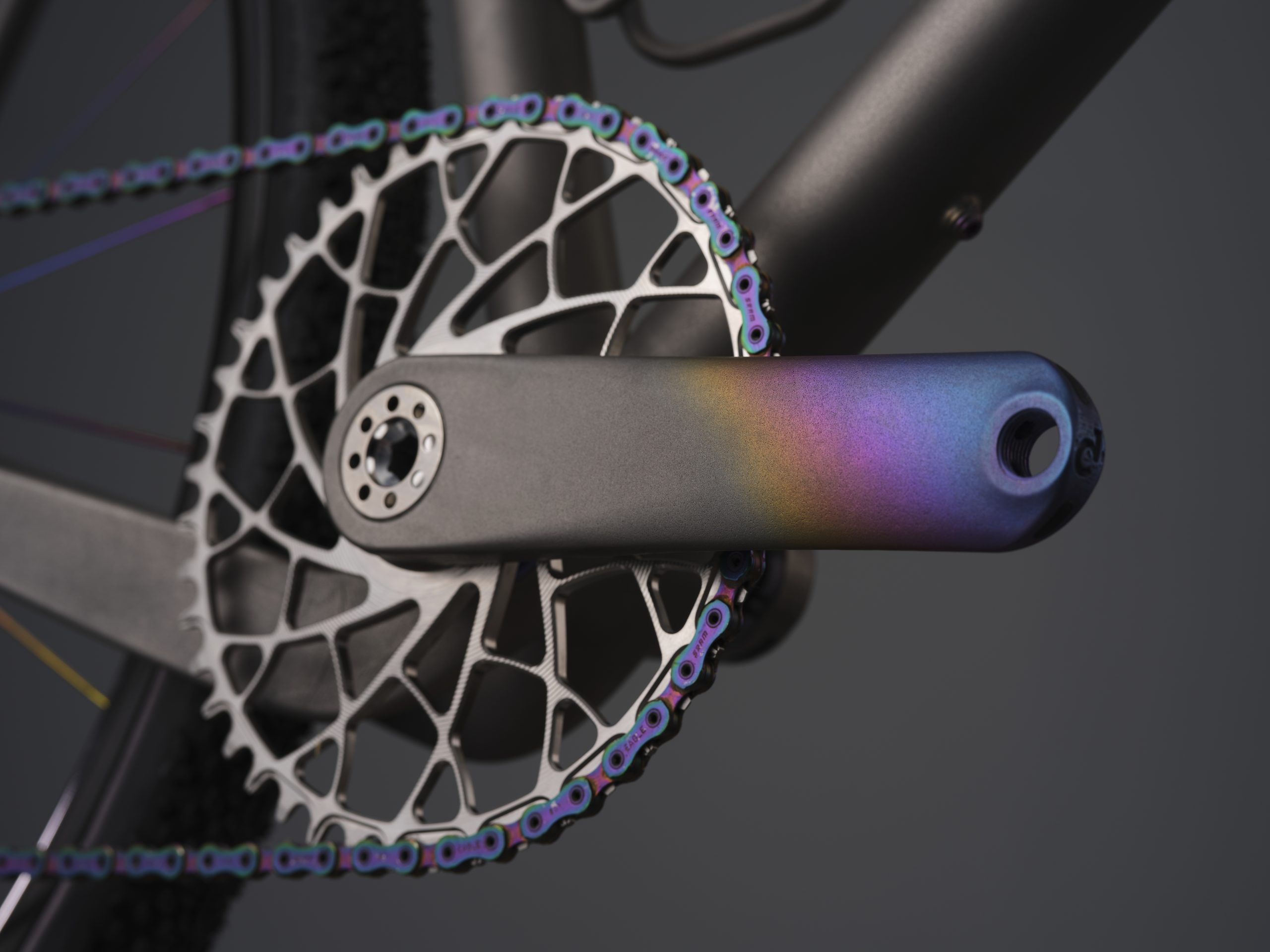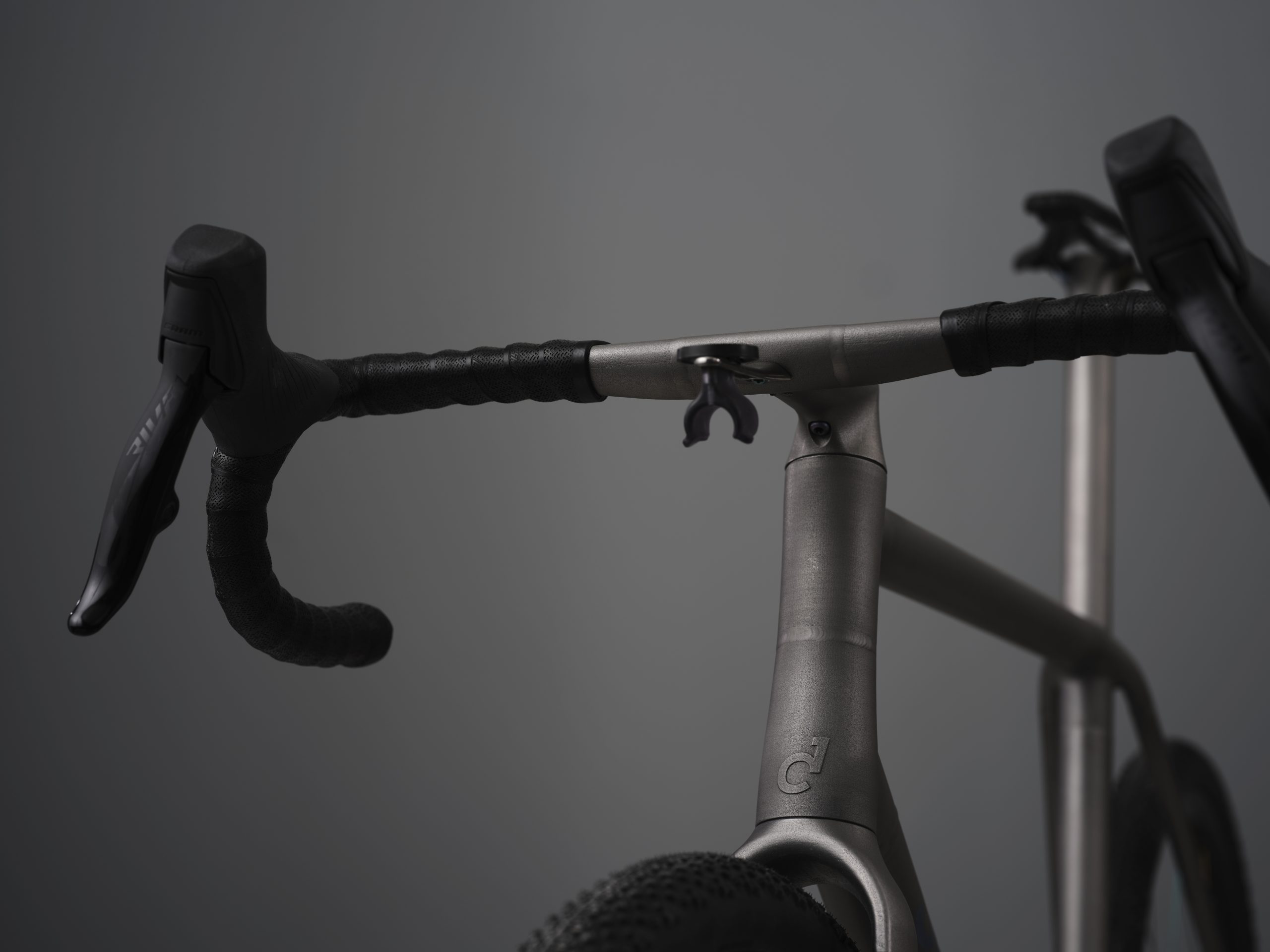Somerset-based custom bicycle producer Sturdy Cycles has switched the production of its titanium bicycle parts to Cold Metal Fusion technology (CMF) from German 3D printing bureau Headmade Materials.
The two companies will work together to 3D print titanium components such as crank arms, frameset connectors and chainstay parts, for Sturdy Cycles’ Fiadh titanium road bike using CMF, with Sturdy Cycles owner and frame builder Tom Sturdy favoring the technology over SLM.
“Since Headmade Materials is very closely involved in part development, Tom highlighted the advantages of our technology to us during a conversation,” said Andreas Schertler, Applications Engineer at Headmade Materials.

Headmade’s CMF technology
Headmade Materials was established in 2019 after being spun off from the polymer research institute Das Kunstsoff-Zentrum (SKZ) in Wuerzburg, Germany. The firm’s founders Christian Staudigel and Christian Fischer set out with the mission to design a process that would make serial 3D printing cheaper and more accessible, leading to the development of CMF.
CMF broadly combines metal sintering with SLS in a novel manufacturing technique, with Headmade’s proprietary 3D printing material setting it apart from conventional SLS processes. The firm’s metal powder feedstock is integrated with a plastic binder matric that both improves its flowability and increases its compatibility with different machines.
The four-step CMF process starts with upscaling the CAD file of a target object before it is produced layer-by-layer in a similar fashion to SLS 3D printing, but at a temperature below 80°C. Operating at a lower temperature significantly minimizes heating and cooling times, therefore preventing the need for external cooling devices, while also offering energy and time-saving advantages.
Following the printing phase, parts are then de-caked, post-processed, debinded, and sintered. During printing, the plastic binder contained within Headmade’s proprietary powder resin is melted away and used only as a support structure, delivering parts that the firm claims are comparable to those produced by injection molding.
The partnership with Sturdy Cycles is not the first time the firm’s CMF technology has been deployed for the production of bike components. Last year, Headmade partnered with 3D printing service bureau Element22 to develop a novel 3D printed bike pedal design dubbed MyTi. Initially available for backing on kickstarter, the clipless titanium pedals launched under the joint Titanum brand later that year.

3D printing the Fiadh
For its latest bicycle-related project, Headmade has once again teamed up with Element22 to 3D print the titanium components for Sturdy Cycles’ Fiadh titanium road bike. The Fiadh is designed to be a sporty road bike and as such, required durable weight-optimized components.
Frame builder Sturdy is no stranger to 3D printing, having previously partnered with metal 3D printing service provider RAM3D to produce titanium components for his other road bike models. Sturdy settled on 3D printing due to its ability to produce parts with complex geometries not achievable via conventional manufacturing means, an integral element to his bespoke bike frame business.
Having realized the added benefits of CMF, Sturdy has now switched the production of several titanium bike parts to the technology. The technique is being leveraged to produce 3D printed connectors which are welded to polished tubes on the Fiadh’s frameset, and which accommodate major bike components such as the handlebars, saddle, and bottom bracket.
The bike’s chainstay is also made entirely of components 3D printed using CMF, as are the model’s crank arms, which Sturdy is now distributing as part of a standalone crankset.

Due to the bespoke nature of Study Cycles’ business, the individual segments of each bike are similar in structure in design however no two bikes are alike. With parts tailored to individual riders, all components are different in their dimensions, which has now become economically feasible in high volumes thanks to Headmade’s CMF technology. In fact, Sturdy now aims to produce annual quantities of the Fiadh in the triple digits.
According to him, this is made possible by CMF’s excellent process stability and the resulting repeatability for components, which has led to easier and more efficient frame and part production. The technology also delivers less stress to metals parts compared to those produced with SLM, while the improved part surface achieved with the technique simplifies the surface finishing process for components.
Sturdy also attributes efficiency gains to the reduced amount of preparatory work needed to integrate CMF-printed components into the bike manufacturing process, compared to SLM parts. Enhanced part quality delivered by CMF further means that the majority of work can be done on-site at Sturdy’s production facility which in turn reduces costs and coordination efforts with various service providers.
“The production of the components has now been completely taken over by titanium specialist Element22 and we are happy to contribute with our Cold Metal Fusion technology to ensure that these dreamlike road bikes from Sturdy Cycles find their way to many satisfied customers,” said Fischer, Headmade Material’s Managing Director and Co-founder.
According to the more than 40 CEOs, leaders, and experts that shared their 2022 3D printing trends predictions with us, progress within material qualification and increasing demand for higher performance materials illustrate the confidence manufacturers are placing in additive manufacturing technologies, while the technology’s ability to enable mass customization is expected bring “enormous value” to a host of applications to benefit both industries and people.

Subscribe to the 3D Printing Industry newsletter for the latest news in additive manufacturing. You can also stay connected by following us on Twitter and liking us on Facebook.
Looking for a career in additive manufacturing? Visit 3D Printing Jobs for a selection of roles in the industry.
Subscribe to our YouTube channel for the latest 3D printing video shorts, reviews and webinar replays.
Featured image shows Sturdy Cycles’ Fiadh road bike. Photo via Headmade Materials.



